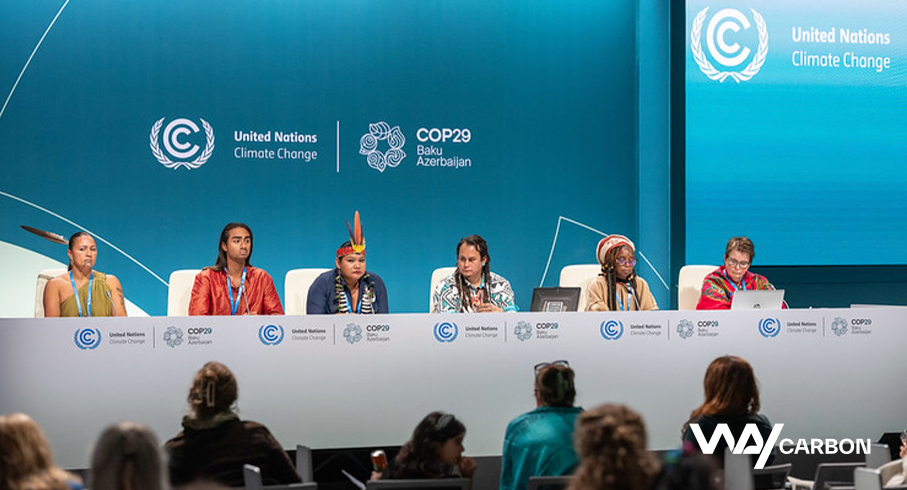Warnings about greenwashing narratives in climate commitments
In times of urgent climate action, many consumers, shareholders, and regulators have changed their consumption and investment patterns and are pressuring companies for concrete actions to decarbonize the planet. This is reflected in a race for leadership in the corporate climate agenda, as we know that those who come out ahead almost always have a competitive advantage.
Undoubtedly, there are growing market opportunities for companies willing and able to advance ambitious climate goals, and communicating these actions becomes increasingly strategic. Stakeholder calls for “carbon-neutral,” “net-zero,” “climate-positive,” and other actions are becoming more common among corporations. However, companies need to be very clear about how they develop and communicate their climate strategy, so that their discourse does not raise legal concerns or reputational risks by being seen as greenwashing.
What is Greenwashing?
Greenwashing occurs when a company selectively promotes its products or services, highlighting positive aspects and ignoring negatives. “Green marketing” also occurs when companies use vague or misleading terms such as as “natural”, “eco-friendly”, and “climate-friendly” to describe their products or services, making them appear more environmentally friendly, socially impactful, or sustainable than they actually are.
This concept also applies to the disclosure of greenhouse gas (GHG) emission reduction targets by companies. Some misguided decarbonization narratives can give the impression of greenwashing, as highlighted in a recent paper published by the New Climate Institute in partnership with the Carbon Market Watch. Among the “flaws,” we can highlight:
- Vague, incomplete, or misleading plan regarding scope, timeline or methodology;
- The achievement of the target relies heavily on carbon offsets or other external measures that do not address the root causes of emissions or ensure their permanent removal;
- The target is not consistent with the latest scientific evidence or best practices for limiting global warming to 1.5°C2; and/or,
- Plan not supported by actions, investments, or policies that lead to the achievement of the targets or with insufficient targets.
How to avoid greenwashing?
These flaws in the decarbonization strategy narrative can undermine the credibility and reputation of the companies and organizations that adopt them, as well as the collective effort to address the climate crisis. In order to mitigate the risk of greenwashing and ensure that the decarbonization strategy and its disclosure are in line with market best practices, organizations should take the following steps:
- Educate themselves and their stakeholders on the basics of ESG (environmental, social, and governance) and the risks and consequences of greenwashing;
- Establish clear and transparent climate governance structures and policies that are aligned with the business strategy and values, and integrate the carbon variable into decision making;
- Develop measures to reduce emissions in different activities and processes, such as switching to renewable energy sources, improving energy efficiency, adopting low-carbon technologies, zero-deforestation, applying circular economy principles, etc., and only offset the residual emissions;
- Set decarbonization targets that are specific, measurable, and achievable, both for their own operations and for the value chain, and that are in line with the international commitment to limit global warming to 1.5°C; Companies can make use of guidelines such as those of the Science Based Target Initiative (SBTi) to align targets with science.
- Assess and prioritize projects and investments taking into account their cost-effectiveness in achieving climate targets, impact potential, co-benefits, and risks;
- Measure and report annually on their GHG emissions and progress toward goals using recognized benchmarks and guidelines, such as those of the Intergovernmental Panel on Climate Change (IPCC), the Task Force on Climate-related Financial Disclosures (TCFD) and the Greenhouse Gas Protocol (GHG Protocol);
- Establish and clearly disclose a roadmap of the means and resources required for decarbonisation, as well as the timeframe for achieving it;
- Integrate disclosures into financial and decision making reporting, disclosing how climate risk impacts their financial performance and value creation, or how climate risk is integrated into capital allocation and risk management processes;
- Disclose how much of the reduction target is based on the purchase of carbon credits, what emissions these credits cover, and the quality of the credits used, with a focus on residual emissions and high quality credits;
- Engage stakeholders throughout the planning process to communicate decarbonization targets and strategies clearly and transparently, seek their feedback and cooperation, address their concerns and expectations, build trust and commitment, foster innovation and learning, etc. Stakeholders include customers, suppliers, investors, regulators, government, partners, employees, communities, and civil society groups.
Companies can rely on WayCarbon to support them from diagnosis through to the creation and monitoring of their evidence-based climate strategy and plan, as well as cost-effectiveness analysis of actions, sustainable financing options, and implementation support. With the support of agile and traceable ESG management software, such as Climas, as well as expert advice on adaptation, mitigation, and compensation consulting, the company can disclose its actions in a robust and secure way.
 EN
EN  ES
ES PT
PT




